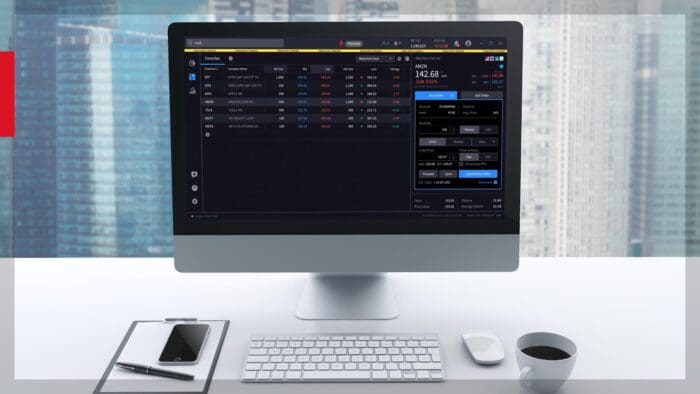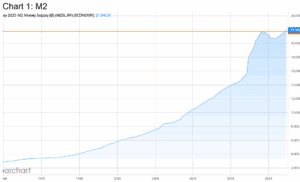Key Takeaways
- The unexpectedly steep tariffs announced on April 2 have injected fresh uncertainty into markets, but with implementation delayed until April 9, investors have a narrow window to reposition around ongoing trade negotiations.
- Despite rising risks to growth posed by tariffs, the Federal Reserve is maintaining flexibility, with Chair Powell signaling potential rate cuts while emphasizing the economy’s underlying strength as a buffer.
- Treasury yields have dropped sharply amid a flight to safety, yet markets have not priced in a full-blown economic downturn—creating both risk and opportunity depending on how trade and fiscal headlines evolve.
With the financial markets still wrestling with the tariff announcements from last week, one thing is still certain: uncertainty remains an integral part of the investment landscape. While we now know the actual tariff announcements, we don’t know what the final results will ultimately look like in the weeks and months ahead, and more importantly, their potential impacts on the economy and inflation, not to mention Federal Reserve policy decisions. Against this backdrop, there’s been a debate about whether recently released data, such as the March jobs report, represents stale, i.e., pre-tariffs, news. Yes, one can certainly make that case, but we would argue that how the economy/labor markets looked prior to Liberation Day is also important to see if things were sound enough to be able to absorb the potential negative effects that could be coming. One silver lining is that the March employment data revealed the labor market was still in relatively solid condition pre-tariffs.
Here’s some key post-Liberation Day thoughts to keep in mind:
Trump
- Liberation Day has come and gone, and the initial tariff settings were broadly higher than anticipated. There will be negotiations, and these are considered a “ceiling” by US Treasury Secretary Bessent.
- Following April 2, the carveouts for autos and other critical components remain in force. The United States-Mexico-Canada Agreement1-compliant goods are not subject to the newly announced reciprocal tariffs. Negotiations with friendly nations including trade agreements remain ongoing.
- Given the sheer size of the new levies, the next couple of days will be critical for understanding the potential outcomes. The tariffs do not go into effect until April 9, which leaves time for things to change dramatically between the announcement and the implementation.
- Headlines, accurate or not, such as the 90-day extension for every country BUT China, will continue to come fast and furious. This is indicative of the type of policy volatility to expect in the coming weeks as negotiations play out.
- Tariffs will dominate the news cycle. As the current tariffs are the “ceiling,” the coming announcements should largely be incrementally positive for those countries willing to come to the table and negotiate.
- “America First” economic policies are seizing the attention of the markets, and that dynamic will continue as the tariff and trade announcements come across the wire. This is not going to abate in the near future and neither will the consequent volatility.
Powell
- According to Fed Chair Powell, the April 2 tariff announcements were larger than expected, raising both downside risks to the ecnonomy and upside risks to inflation.
- Nevertheless, Powell continued to emphasize that it is too soon to say what the appropriate path should be for monetary policy.
- While the Fed appears to be still skewed toward rate cuts later this year, Powell acknowledged the economy and labor markets remain solid, providing the policy makers some cushion to “take a step back and let things clarify”.
- Implied probabilities for Fed Funds Futures, as of this writing, are now tilted toward four to five rate cuts for this year—we all know the drill here—so take it with a grain of salt.
- In our opinion, a baseline of two rate cuts for this year is a reasonable scenario, but the bar is very high for any intermeeting market-related easing move.
Rates
- The Treasury (UST) market has been the beneficiary of the significant risk-off trade, as the 10-Yr yield had fallen by close to 50 basis points from just a week or so ago. Interestingly, a similar move occurred post-Silicon Valley Bank back in 2023.
- The UST 10-Yr yield has still not discounted a hard landing. That would look more like 3.50%, at a minimum. The other side of the trade is that a reversal or stability in the stock market takes it back to the 4.25% level to start with.
- While risk-off has been supportive for Treasuries, headlines could shift to a less friendly backdrop later in Q2/Q3, as fiscal policy and budget deficits could come back into focus.
Conclusion
Our advice remains: stay tuned and don’t get too caught up in the day-to-day headlines because this is going to be a very fluid situation, with lots of volatility.
—
Originally Posted April 7, 2025 – Trump, Powell & Rates: The Post-Liberation Day Edition
1 The United States-Mexico-Canada Agreement (USMCA) is a free trade agreement that replaced the North American Free Trade Agreement (NAFTA) and entered into force on July 1, 2020, aiming to create a more balanced and mutually beneficial trade environment for North American workers, farmers, ranchers, and businesses.
Disclosure: WisdomTree U.S.
Investors should carefully consider the investment objectives, risks, charges and expenses of the Funds before investing. U.S. investors only: To obtain a prospectus containing this and other important information, please call 866.909.WISE (9473) or click here to view or download a prospectus online. Read the prospectus carefully before you invest. There are risks involved with investing, including the possible loss of principal. Past performance does not guarantee future results.
You cannot invest directly in an index.
Foreign investing involves currency, political and economic risk. Funds focusing on a single country, sector and/or funds that emphasize investments in smaller companies may experience greater price volatility. Investments in emerging markets, real estate, currency, fixed income and alternative investments include additional risks. Due to the investment strategy of certain Funds, they may make higher capital gain distributions than other ETFs. Please see prospectus for discussion of risks.
WisdomTree Funds are distributed by Foreside Fund Services, LLC, in the U.S. only.
Interactive Advisors offers two portfolios powered by WisdomTree: the WisdomTree Aggressive and WisdomTree Moderately Aggressive with Alts portfolios.
Disclosure: Interactive Brokers Third Party
Information posted on IBKR Campus that is provided by third-parties does NOT constitute a recommendation that you should contract for the services of that third party. Third-party participants who contribute to IBKR Campus are independent of Interactive Brokers and Interactive Brokers does not make any representations or warranties concerning the services offered, their past or future performance, or the accuracy of the information provided by the third party. Past performance is no guarantee of future results.
This material is from WisdomTree U.S. and is being posted with its permission. The views expressed in this material are solely those of the author and/or WisdomTree U.S. and Interactive Brokers is not endorsing or recommending any investment or trading discussed in the material. This material is not and should not be construed as an offer to buy or sell any security. It should not be construed as research or investment advice or a recommendation to buy, sell or hold any security or commodity. This material does not and is not intended to take into account the particular financial conditions, investment objectives or requirements of individual customers. Before acting on this material, you should consider whether it is suitable for your particular circumstances and, as necessary, seek professional advice.



















Join The Conversation
For specific platform feedback and suggestions, please submit it directly to our team using these instructions.
If you have an account-specific question or concern, please reach out to Client Services.
We encourage you to look through our FAQs before posting. Your question may already be covered!